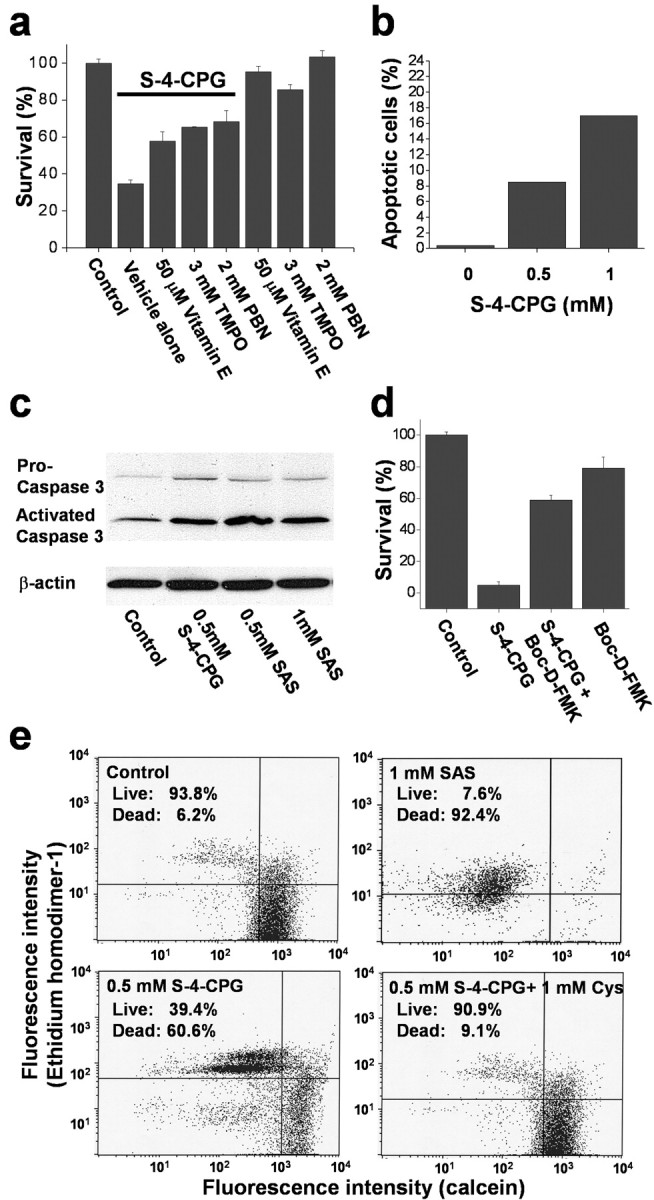Figure 5.

Cystine uptake inhibition induces apoptotic cell death. a, Treatment with free radical scavengers including vitamin E, TMPO ( scavenger), and PBN (
scavenger), and PBN ( scavenger) partially restores glioma cell growth in the presence of (S)-4-CPG. b, (S)-4-CPG causes DNA fragmentation as indicated by flow cytometric analysis, which is indicative of apoptotic cell death. c, (S)-4-CPG and sulfasalazine (SAS) increase the activated form of caspase-3. Caspase-3 antibodies recognize both the proform (32 kDa) and the activated form (17 kDa). d, The panspecific caspase-3 inhibitor Boc-D-FMK (100 μm) blocked cell death induced by 0.25 mm (S)-4-CPG, further suggesting that cell death invoked caspase-3 activity and hence is presumed to be apoptotic. e, Cell death was also confirmed using the Live/Dead assay kit (Molecular Probes), which, when cells are analyzed by fluorescence-activated cell sorting, show an enhanced number of dead cells that are ethidium homodimer positive, as opposed to live cells that express primarily calcein. Chronic treatment with either (S)-4-CPG or sulfasalazine induced cell death, and exogenously added cystine can overcome cell death in the presence of (S)-4-CPG (c) or sulfasalazine (data not shown). Error bars indicate SE.
scavenger) partially restores glioma cell growth in the presence of (S)-4-CPG. b, (S)-4-CPG causes DNA fragmentation as indicated by flow cytometric analysis, which is indicative of apoptotic cell death. c, (S)-4-CPG and sulfasalazine (SAS) increase the activated form of caspase-3. Caspase-3 antibodies recognize both the proform (32 kDa) and the activated form (17 kDa). d, The panspecific caspase-3 inhibitor Boc-D-FMK (100 μm) blocked cell death induced by 0.25 mm (S)-4-CPG, further suggesting that cell death invoked caspase-3 activity and hence is presumed to be apoptotic. e, Cell death was also confirmed using the Live/Dead assay kit (Molecular Probes), which, when cells are analyzed by fluorescence-activated cell sorting, show an enhanced number of dead cells that are ethidium homodimer positive, as opposed to live cells that express primarily calcein. Chronic treatment with either (S)-4-CPG or sulfasalazine induced cell death, and exogenously added cystine can overcome cell death in the presence of (S)-4-CPG (c) or sulfasalazine (data not shown). Error bars indicate SE.
